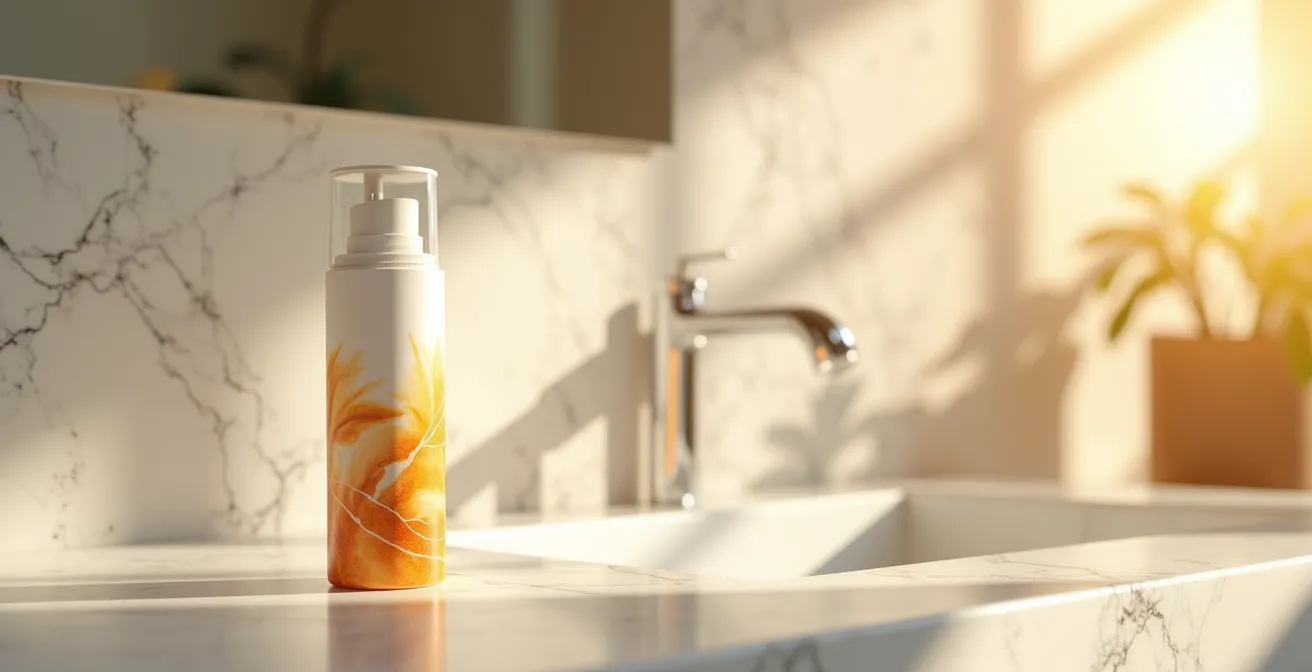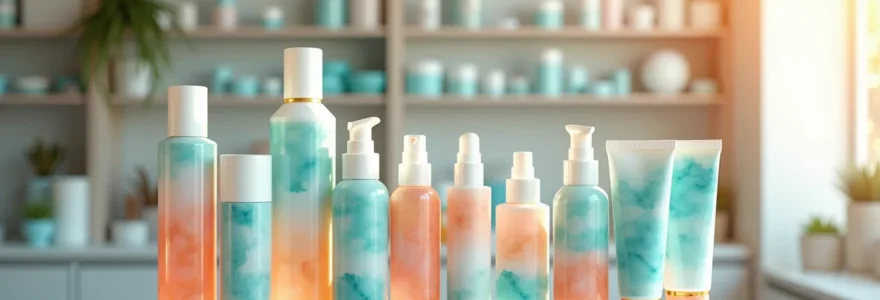Navigating the sunscreen aisle at the pharmacy can feel overwhelming. Faced with a wall of options promising high SPF and all-day protection, it’s easy to grab the first bottle that looks familiar. But the secret to effective sun protection isn’t just about the number on the label; it’s about mastering the art of formulation. True success lies in understanding how specific ingredients, textures, and even regulatory standards come together to solve nuanced skin challenges that go far beyond a simple sunburn. On a curated website dedicated to sunscreen, you can begin to explore the vast world of advanced formulations designed for targeted needs.
This guide moves beyond generic advice to empower you with the knowledge to decode labels, identify beneficial actives, and select a product that works in harmony with your skin. By focusing on the science behind the formula, you can find a pharmacy sunscreen that not only protects but also enhances your skin’s health.
Your Pharmacy Sunscreen Decoder
- Understand the science behind dermatologist-recommended brands and what makes them effective.
- Learn to read ingredient lists to avoid common irritants and identify beneficial actives.
- Find targeted solutions for complex issues like hyperpigmentation, acne, and sensitivity.
- Master the art of application and troubleshooting to build a consistent, successful routine.
Unlocking Pharmacy Sunscreen’s Unique Offerings: Beyond the Aisle
Pharmacy shelves are home to a unique category of sunscreens that often bridge the gap between mass-market products and prescription-level skincare. Many of these lines are dermatologist-recommended precisely because their formulations are backed by extensive scientific research and clinical testing. They prioritize not just UV protection but also skin health, incorporating ingredients that support the skin barrier, reduce inflammation, and address specific concerns.
This is where value becomes clear. Pharmacy brands excel at balancing high efficacy with affordability and accessibility, making consistent, daily use achievable. A key part of their reliability stems from their regulatory classification. In the United States, sunscreens are regulated as over-the-counter (OTC) drugs by the FDA, which means they must meet stringent standards for safety and effectiveness. This oversight provides a layer of quality assurance you can trust.
What does GRASE mean for sunscreens?
GRASE stands for “Generally Recognized as Safe and Effective.” Currently, the FDA only grants this status to the mineral UV filters Zinc Oxide and Titanium Dioxide, indicating they have sufficient data to be considered safe for long-term use without requiring a new drug application.
The recent FDA action on sunscreens indicates that all sunscreens with an SPF 15 or higher must satisfy broad spectrum test requirements. The FDA has deemed the maximum labelled SPF of 60 plus and the maximum market SPF of 80.
– Susan Taylor, MD, FAAD, Dermatology Times
This table breaks down the FDA’s regulatory categories for active sunscreen ingredients, helping you understand the safety classifications you’ll encounter.
| Category | Classification | Active Ingredients |
|---|---|---|
| Category 1 (GRASE) | Generally Recognized as Safe and Effective | Zinc oxide, Titanium dioxide |
| Category 2 (Non-GRASE) | Not Allowed | PABA, Trolamine salicylates |
| Category 3 (Insufficient Evidence) | Requires More Safety Data | Oxybenzone, Avobenzone, Octinoxate, Octisalate, Octocrylene, Homosalate |
The importance of effective sun protection programs extends beyond individual skin health, carrying significant public health and economic benefits.
Return on Investment Analysis for Sunscreen Programs
A 20-year cost-effectiveness study of the WA SunSmart program demonstrated that for the WA Government, the estimated return on investment was $8.70 gained for every $1 invested. The program cost $19.1 million over 20 years while government benefits totaled $166.1 million, with total cost savings to governments of $655.4 million from avoided healthcare costs and productivity losses.
Decoding Pharmacy Labels for Nuanced Skin Challenges
The ingredient list on a sunscreen bottle is your most powerful tool for finding the right match for your skin. For those with sensitive or reactive skin, it’s crucial to spot potential irritants. Beyond the active UV filters, look out for hidden culprits like synthetic fragrances, certain preservatives, and drying alcohols, which are common triggers for redness and discomfort.
Texture is another critical factor that labels can help predict. Issues like pilling—where the product balls up on the skin—can ruin both your skincare and makeup application. A clinical study revealed that 41% of volunteers experienced sunscreen pilling in clinical study, often due to incompatible ingredients between skincare layers. Similarly, claims like “non-comedogenic” (won’t clog pores) and “oil-free” are vital for acne-prone skin. However, it’s wise to cross-reference these claims by checking the ingredient list for pore-clogging oils or butters to ensure the formulation truly suits your needs.
The way a sunscreen feels and spreads is just as important as its protective capabilities. A lightweight, non-greasy texture encourages consistent daily application.

Ultimately, the best sunscreen is one you’ll enjoy wearing every day. Formulations with elegant textures that absorb quickly without leaving a white cast or greasy residue are more likely to become a staple in your routine.
For those with sensitive skin, this checklist helps identify common irritants to avoid when selecting a sunscreen.
Common Sunscreen Ingredients to Avoid for Sensitive Skin
- Identify chemical UV filters that may cause irritation – Avoid oxybenzone, avobenzone, octinoxate, and octisalate which can be absorbed into skin and trigger allergic reactions.
- Check for hidden irritants in inactive ingredients – Look out for synthetic fragrances and artificial dyes that are well-known culprits for triggering allergic reactions in sensitive skin.
- Screen for comedogenic oils and butters – Avoid coconut oil, cocoa butter, mineral oil, beeswax, and silicones which can trigger breakouts in acne-prone skin.
- Verify product claims on labels – Check that ‘non-comedogenic’ and ‘oil-free’ claims are supported by ingredient lists that exclude pore-clogging components like PABA, soybean oil, and wheatgerm oil.
Understanding the prevalence of sunscreen allergies can provide context for why certain formulations may cause reactions.
| Population Segment | Reaction Rate | Common Cause |
|---|---|---|
| General Adult Population | 1% or less | Chemical filters and fragrances |
| Fragrance Allergy Cases | 1-2% of general population | Fragrance mix ingredients |
| Patch Test Clinic Patients | Low prevalence | Active sunscreen components |
| Photoallergic Contact Dermatitis | Common cause | Chemical absorbers under UV exposure |
Strategic Sunscreen Selection for Complex Skin Concerns
When dealing with complex skin concerns, your pharmacy sunscreen can serve as both a protective shield and an active treatment. For hyperpigmentation, such as dark spots and uneven tone, look for formulations fortified with ingredients like niacinamide and vitamin C. These powerful antioxidants help inhibit melanin production and reduce inflammation, actively working to fade discoloration while preventing new spots from forming.
La Roche-Posay Mela B3 sunscreen combines niacinamide and Melasyl to tackle discoloration and scarring just as well as the serum. It’s been weeks since I started using it, and my dark marks aren’t as pronounced as they once were.
– Nerisha Penrose, Beauty Commerce Editor, ELLE Magazine
Those with combination or acne-prone skin often struggle to find a sunscreen that doesn’t feel heavy or cause breakouts. The key is to find a formula that balances hydration and oil control. Lightweight, non-comedogenic options are ideal. For individuals with a compromised skin barrier, perhaps after a cosmetic procedure, soothing and protective ingredients are paramount. Formulations with zinc oxide, ceramides, and calming extracts can help repair and protect delicate skin. For more advanced options, you can explore top sun protection from specialized brands.
This checklist outlines key ingredients and strategies for choosing a sunscreen that actively targets hyperpigmentation.
Selecting Sunscreens for Hyperpigmentation and Dark Spots
- Look for niacinamide as a key ingredient – This acts as a transport regulator, decreasing the movement of melanin from melanocytes to keratinocytes, thereby reducing visible pigmentation.
- Choose formulations with vitamin C – L-ascorbic acid powerfully neutralizes free radicals and inhibits melanin production, providing synergistic benefits when combined with niacinamide.
- Consider pH balance when layering products – Since L-ascorbic acid works in acidic environments and niacinamide in neutral ones, leave time gaps between applications or use pre-formulated combination products.
- Target post-inflammatory hyperpigmentation – The vitamin C and niacinamide combination is particularly well-suited for hyperpigmentation caused by inflammation, with niacinamide reducing inflammation while strengthening the skin barrier.
For those with acne-prone skin, understanding the benefits of different non-comedogenic sunscreen types is the first step toward clear, protected skin.
| Sunscreen Type | Key Benefits | Recommended For |
|---|---|---|
| Non-Comedogenic Formulas | Oil-free, won’t clog pores | Acne-prone and sensitive skin |
| Mineral-Based Sunscreen | Physical UV blockers, not absorbed into skin | Skin prone to acne or sensitivity |
| Anti-Inflammatory Enriched | Contains niacinamide (Vitamin B3) or azelaic acid | Reducing redness and irritation while protecting |
The effectiveness of specialized sunscreens for post-procedure care is often validated by clinical testing. For example, after one month of using Cicaplast Baume B5 SPF50, patients reported significant improvements: 91% experienced reduced burning sensations, 88% noted less tightness, and 93% observed a reduction in redness. Its filtering system is specifically designed to prevent the appearance of colored marks on healing skin.
Key Takeaways
- Focus on formulation science, not just the SPF number, to find a truly effective pharmacy sunscreen.
- Decode ingredient labels to avoid common irritants and identify beneficial actives for your specific skin concerns.
- Select sunscreens with added ingredients like niacinamide or vitamin C to target issues like hyperpigmentation.
- Always perform a patch test to ensure compatibility and prevent widespread skin reactions with new products.
- Build a consistent routine by troubleshooting common issues like pilling and choosing a texture you enjoy using daily.
Your Pharmacy Sunscreen Success Blueprint: Navigating Choices and Building Habits
Finding the perfect pharmacy sunscreen is only half the battle; integrating it successfully into your daily routine is what yields long-term results. Before committing to a new product, always perform a patch test. This simple step involves applying a small amount of sunscreen to a discreet area, like your inner forearm, to ensure it doesn’t cause an adverse reaction. It’s a crucial safeguard, especially for sensitive skin.
If your first choice doesn’t work out, don’t get discouraged. Common issues like a white cast, greasiness, or pilling can often be solved by switching from a mineral to a chemical formula, or vice versa, or by selecting a different texture. When you find a winner, the final step is consistency. The best way to achieve lasting skin health is by making sunscreen application an unshakable daily habit, just like brushing your teeth. This involves not only initial application but also choosing the right sunscreen for reapplication throughout the day.
To ensure a new sunscreen is compatible with your skin, follow this systematic patch testing procedure.
Proper Patch Testing Procedure for Sunscreen Products
- Choose the right test spot – Apply sunscreen to the inner forearm, behind the ear, or side of neck where skin is sensitive enough to show reactions but discreet.
- Apply a small pea-sized amount – Gently apply a thin layer to your chosen test spot without rubbing vigorously, leaving it open to air for accurate assessment.
- Observe for immediate reactions (15-30 minutes) – Watch for redness, itching, burning, or swelling that appears shortly after application; wash immediately if reactions occur.
- Complete the 24-48 hour wait period – Leave the sunscreen on the test spot and check again after 24 hours, or wait 48-72 hours for very sensitive skin to catch delayed reactions like bumps, dryness, or persistent itching.
Understanding common sunscreen problems can help you troubleshoot and find a product that works seamlessly with your skincare and makeup routines.
| Problem | Cause | Solution |
|---|---|---|
| Sunscreen feels heavy under makeup | Using thick formulation or wrong moisturizer | Switch to face moisturizer with built-in SPF 30+, suitable for your skin type with matte finish |
| Sunscreen triggers breakouts | Pore-clogging ingredients or wrong texture | Look for non-comedogenic formulas with thinner texture and natural skin-friendly ingredients |
| White cast on skin | Mineral filters not adequately blended | Choose chemical sunscreens, tinted mineral formulas, or apply in thin layers pressed into skin |
| Sunscreen pilling or flaking | Product incompatibility or insufficient absorption | Allow skincare to fully absorb before sunscreen, apply thin layers, keep skin clean and exfoliated |
Establishing a daily ritual is key to consistent sun protection. The right product should feel like a seamless, even enjoyable, part of your morning routine.

By transforming sunscreen application from a chore into a habit, you invest in the long-term health and appearance of your skin, protecting it from premature aging and reducing the risk of skin cancer.
Frequently Asked Questions on Sunscreen Guide
How often should you reapply face sunscreen?
Reapply face sunscreen at least every two hours when outdoors. If you’re swimming, sweating, or toweling off, reapply immediately after. The American Academy of Dermatology recommends setting a reapplication reminder on your phone to stay on track with your SPF routine.
Why does sunscreen lose effectiveness throughout the day?
Sweat, water, sunshine, and even touching your face can break down sunscreen’s protective power. UV rays gradually wear down active ingredients, moisture causes formulas to wear off faster, and physical contact can remove sunscreen leaving unprotected areas behind.
How much sunscreen should I apply for proper protection?
Use about an ounce of sunscreen (enough to fill a shot glass) to cover your entire body, and a nickel-sized dollop for the face alone. Most people only apply 25-50% of the recommended amount, which significantly reduces protection.
Why does my sunscreen pill or ball up on my face?
Sunscreen pilling occurs when products aren’t fully absorbed and clump together due to too many product layers, ingredient incompatibility with moisturizers or makeup, applying products too quickly without dry time, or using too much product at once.
